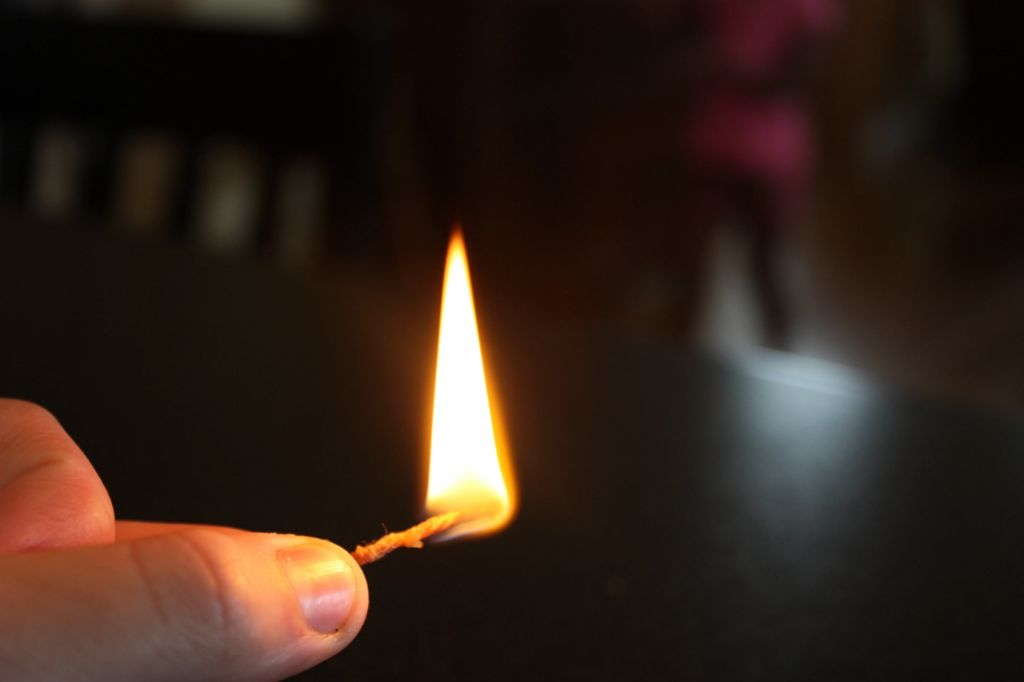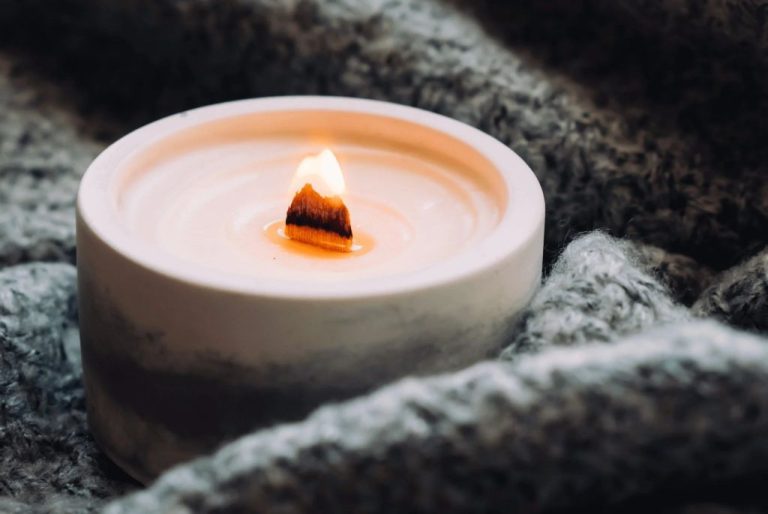Can You Use String As A Candle Wick?
Candles are one of humanity’s oldest inventions, dating back over 5,000 years to ancient Egypt and China. But without the right wick, a candle would be nothing more than a pool of melted wax. The wick is the key component that allows candles to burn, acting as a fuel delivery system that draws wax up to the flame. Over the centuries, candlewicks have evolved from crude fibrous ropes to high-tech, braided masterpieces engineered for optimal performance. But can you use just any household string as an improvised candlewick? We’ll explore the possibilities, science, and history behind using string as a makeshift wick. Understanding wick fundamentals is essential for every candle maker and enthusiast. So let’s shed some light on this fiery question!
What is a Candle Wick?
A candle wick is a specially designed string that is used in candles to draw up melted wax to fuel the flame. The wick serves as a continuous fuel source for the candle. As the candle burns, the wax melts and travels up the wick via capillary action. The wax is then vaporized by the flame at the tip of the wick.
The wick is a key component in candle making. It helps regulate the flame and prevents the melted wax from drowning the wick. The wick material, thickness and braiding all impact how well the wick performs. Wicks are typically made from materials like cotton, paper, or wood.
The main purposes of a wick are:
– Draw wax up to the flame via capillary action
– Vaporize the wax at the tip to sustain the flame
– Regulate the size and shape of the flame
– Prevent the melted wax from drowning the wick
Wick Materials
Candle wicks are typically made from natural fibers like cotton, paper, or wood. Cotton is one of the most popular wick materials due to its ability to bend as it burns without breaking, promoting an even burn. Cotton wicks tend to provide a clean, smokeless burn. Paper and wood wicks are also common, providing a crackling sound as they burn. Paper wicks are inexpensive but don’t bend well, while wood wicks are stiff but can leave residue behind. Some other natural materials like hemp or beeswax can also be used for wicks. Synthetic materials like nylon can be used as well, however they tend to burn hotter and release more soot. The wick material impacts the hotness, brightness and smell of the flame. Most modern manufactured candle wicks use cotton or paper, with options like wood for a more natural, crackling effect.
Can You Use String?

You can use string as a candle wick, but it has both pros and cons. Cotton string works best since natural fibers like cotton burn slowly and evenly. Here are some key considerations when using string as a wick:
Pros:
- String is inexpensive and easy to find.
- Cotton string burns slower than synthetic fibers.
- Natural cotton fibers tend to self-trim as they burn.
Cons:
- String can char and smoke more than a braided or flat cotton wick.
- Synthetic fibers like polyester can melt and release toxins.
- Twisted shapes don’t absorb wax as well.
- May need to trim wick more often to avoid carbon build-up.
Overall, 100% cotton string can work in a pinch but may require more maintenance. Braided cotton wicks are preferable for slower, cleaner burning and less trimming. Test any wick material first for best results.
How to Make a String Wick
Making a candle wick from string is a simple process that only requires a few steps. Here is how to make a DIY string wick for candles:
1. Select a natural fiber string such as cotton, hemp, or jute. Synthetic fibers like polyester may not burn properly. Cut the string to the desired wick length.
2. Boil water in a saucepan and add about 1-2 tablespoons of salt. The salt helps stiffen the fiber.
3. Add the string to the boiling salty water and allow it to boil for 5-10 minutes. This helps remove any coatings on the string and saturates it with salt.
4. Remove the string from the water and allow it to dry completely before using as a wick. The salt will crystallize and help the string maintain its shape.
5. To use, simply place the DIY string wick into melted wax or a candle making kit as you would any other wick.
Making your own wicks allows you to customize thickness and length. It also lets you reuse natural fibers. With just some string, water, and salt, you can easily DIY candle wicks.
Wick Diameter
The right wick diameter is crucial for proper candle burning. If the wick is too small for the candle diameter, the flame will be too low and produce smoke and soot. If the wick is too large, the flame will be too high and cause tunneling.
As a general rule, smaller candles need thinner wicks. Larger candles need thicker wicks to sustain a flame large enough to melt the wax pool. Here are some recommended wick diameters for different candle sizes:
- Votives/containers up to 1.5″: use #1 or #2 wick
- Containers 2-3″: use #2 or #3 wick
- Containers 3-4″: use #3 or #4 wick
- Pillars 3-4″ diameter: use #3 wick
- Pillars 4-5″ diameter: use #4 wick
- Pillars over 5″ diameter: use #6 wick or larger
It’s best to test different wick sizes when making a new candle to find the right flame for that wax, fragrance, and candle shape. Refer to manufacturer guidelines for wick recommendations. See this helpful candle wick diameter chart for size reference.
Wick Trimming
Properly trimming the wick is essential for candle performance and safety. The ideal wick length is around 1⁄4 inch (https://greatsouthbaycandles.com/products/wick-trimming-tool). This allows the wick to fully ignite while minimizing excess smoke and promoting complete wax melting. Trim the wick to this length before lighting initially and after every few hours of burn time. This helps remove any mushrooming or carbon build up that occurs on the tip from the flame. Carbon residue will make the flame uneven and sooty. A clean cut with scissors or a wick trimmer right at the wax surface delivers the best results.
Trim the wick after it’s hardened, but before the wax fully sets up. Straight cotton wicks can be trimmed when the wax is still warm and soft. Trim wicks on candles in containers whenever you notice the flame is getting unusually large, flickering a lot, creating smoke or going out often. These are signs the wick needs to be trimmed back. For wood wicks, always trim back to the woodgrain to allow complete combustion of the wood fibers with an open flame (https://www.hetkinen.com/en-us/products/wood-wick-trimmer). This helps prevent tunneling and ensures the wood wick functions properly.
Troubleshooting
One common issue with string wicks is tunneling, when wax melts and forms a tunnel around the wick. This happens if the wick is too small for the candle diameter. The melted wax pools around the wick instead of moving up it to fuel the flame. To fix tunneling, use a thicker string wick or trim the wick shorter so it stands higher in the melted wax pool. According to Practical Self Reliance, cotton wicks above a certain diameter (ZD 18) tend to resist tunneling.
String wicks can also bend over into the melted wax if they are too thin and flexible. Try pre-dipping the wick in wax or rubbing it with beeswax to make it stiffer. You can also braid multiple strands of string together to make a thicker, stiffer wick. Trimming the wick frequently as the candle burns helps it stand upright in the melted wax pool.
If the wick is too thick, it may create an excessive flame and produce more soot. Trim the wick shorter to reduce the flame height. Use a thinner string or reduce the number of braided strands. Refer to wick diameter guides to select the optimal thickness for your candle’s diameter.
Safety Tips
When using string as a candle wick, it’s important to follow some safety tips to avoid hazards like large, sooty flames.
Make sure to trim the wick to 1⁄4 inch before lighting to prevent overly large flames (Beeswax Candle Wick, Safety Wick, 200 Feet for DIY … – Amazon.com). Long wicks can produce tall, sooty flames. Trim the wick as needed to maintain a steady, bright flame no taller than 1⁄2 inch.
Choose an appropriate wick diameter for the candle size. Wicks that are too wide can lead to unstable, flickering flames. Wicks that are too small may tunnel or drown. For string wicks, aim for 1-2mm diameter (US7293984B2 – Self extinguishing safety candle wicks and … – Google Patents).
Avoid drafts which can blow the flame sideways, causing soot. Place candles away from vents, windows, and fans (Beeswax Candle Wick, Safety Wick, 200 Feet for DIY … – Amazon.com).
Never leave a burning candle unattended. Extinguish the flame before leaving a room. Don’t burn candles near flammable materials or leave them burning overnight (Beeswax Candle Wick, Safety Wick, 200 Feet for DIY … – Amazon.com).
With some basic safety practices, string wicks can burn cleanly and safely like conventional candle wicks.
Conclusion
The ability to use string as a makeshift candle wick enables crafty DIYers to upcycle materials around the home into handmade candles. While not ideal for all situations, string can serve as a functional, budget-friendly wick in a pinch. The key is to use the right type and diameter of string for your specific candle and ensure proper wick maintenance. With a string wick, it is especially important to trim the wick as needed to help prevent excessive smoking and promote complete wax pooling. Overall, with some testing and troubleshooting, string can successfully be used to create charming, homemade candles on a budget.



